QuestionQUESTION: I have a 65 gallon saltwater tank with fish and 2 soft coral and just purchased a T5 HO light Fixture w/Led Lunar lights. It has a timer in which you can set the three different types of lights and I just used the already pre-programmed setting which is the following:
Whites: 9am - 5pm
Blues: 9 am - 8pm
LED: 8am - 6am
But after a couple of weeks my tank started growing a lot of algae on my one coral and due to this the coral didn't look too happy for they weren't opening. So I cleaned the coral up as best as I could and they still aren't very happy. So I'm not sure if the algae is still bothering them or if it was just from me scrubbing them. So how long should I leave the lights on in order to prevent such a big algae growth? I changed the white lights to come on at 9am and go off at 3pm. I completely turned off the blue and LED lights for now until I get this algae problem under control.
Another question, since I have been using the new lights my one coral has lost their color except for the two bigger polyps in the colony and they look wonderful!! And my green Zoas look beautiful!! SO any suggestions on how I can make everyone happy?? (Both corals are at the bottom of the tank.) Before I purchased this new lightening system my one coral looked as if they were bleaching due to not enough light for their stalks were transparent, but now their stalks have color and now their disc are not looking happy. I thought that these were the easiest coral to start off with??
ANSWER: Hello Barbara,
First of all, I need to let you know you should always run the blue with the white, together, but the spectrum of your bulbs is very important.
The whites have a spectrum of 12,000 to 14,000 to be safe for saltwater. If they are 6500, or 10,000, they are simply insufficient and need replacement. Let's make sure 100% that we have the correct setup, because lots of uninformed petstores sell T5 lighting to unsuspecting customers without fully knowing the specifications of the bulbs.
What wattage are we looking at, and how many bulbs are there, total?
I suspect we're not using the full spectrum, however please check that and get back with me.
Algae is not always caused by bulbs and lighting and in fact, it cannot grow without food. This immediately alerts me to the fact that your tank is putting out nitrates in heavy doses. Red flag. Let's find out more about the algae as well.
I'd like to know more about your system.
What size tank do you have?
What filtration is on it?
What kind of water do you use?
Have you tested the water and if so, what are the specifications?
I'd also like to know if you use a skimmer, and how long the lights are on everyday.
Run the white alongside the blue, meantime.
Algae will only grow where it's getting food. Light is usually not the culprit, although many uninformed pet-enthusiasts blame lighting. It can donate to it, but it's not usually the source. Your tank should be stable enough to provide proper lighting for your corals. To do that, we need at least 6 to 8 hours of T5 lighting. We can't turn them on if algae can find food to eat and it will increase it...so we go back to square one and try to find the answer in the setup and where it's going wrong.
Last, but not least, I'd like to know what sizes of fish you have, how many and what types.
How often do you feed them and what kind of food are you using?
To answer the coral question, I still need to know more about the tank parameters, and what kind of corals are there. I see Zoanthids, but what is "the other coral"?
Thanks and I hope to give you a better-informed answer when I get more information.
---------- FOLLOW-UP ----------
QUESTION: Light system info.: (2) 39W Actinic 420/460
(2( 39W 10,000K each
(4) Lunar LED's
Wattage: 156
Times: 10,000k lights - 9am-5pm
420/460 lights - 8am-8pm
LED - 8pm-6am
I have a 65 gallon tank which has been set up for 5 years. Have 3 Damsels, 2 green chromes, 4 crabs and one sea snail that just appeared from out of no where. Filter system: Emperor Bio-wheel powerfilter, Fluval Multi-stage 305 canister filter, skimmer and one power head. (I realize that I need another power head.)
Water parameters:
PH-8.4
Nitate: 0
Nitrite: 0
Phosphate: 0
Ammonia: 0
Iodine: 0.06
Calcium: 420
Alkalinity: Normal
Temp: 78
Use deionized water and do about 40% water changes twice a month. I feed my 5 little fish once a day and just give them a pinch of food. I also spot feed my coral with DT. I have a green Zoanthid and the other coral is a Palythoa.
(Also I didn't start getting the bad algae problem until I started using the new lightening system. Prior to the T5's I was using 2 T8 bulbs and keeping the lights on for about 8 hours. I got a little bit of green alage but not as much as I am getting now with the new T5 lights.
So my questions are:
How long to leave the lights on and why are my Palythoa coral looking as if they are bleaching out? Could I have shocked them from the drastic change in lightening? Also I purchased a new canister filter to replace the one that I am currently using, how should I put this new one in place without messing up the biological system and ending up with a new tank syndrome??
AnswerHello again,
Well, first, let's begin with a word of advice. Please don't shoot the messenger. I love giving advice, but it's just advice and nothing written is meant to make you feel bad about how you are caring for your aquarium. You are obviously on the right track here, but some things need to be changed in order for this system to work properly. I just want you to know that advice is important in this for you. Whether you receive it from me or someone else, seek the advice of more experienced aquarists and this system will turn into a wonderful experience, rather than a headache. :)
Don't give in!
Okay, let's take a look at everything you've provided me with, and try to come up with some answers.
The bulbs are sub-standard. The 10k need to be at least 12k. That would increase the proper spectrum of lighting. It's not about the amount of lighting, it's about the amount of PAR (how deep it goes away from the bulb) and about the spectrum, moreso.
10k bulbs and 6500k bulbs contribute to algael growth.
The readings are off. I can tell this because of my experience. There is no possibility that the Nitrites/Nitrates and phosphates, and ammonia are zero. They need to be tested with a different kit. I would suggest your kit is probably old, and maybe it sat on a shelf awhile before you got it. Please consider a new kit or have the pet store re-test your water specfics, compare them together.
A bad test kit can definitely be a big part of what's going on in your system. You can't properly test if a kit has become aged, weathered or had a bad shelf experience. Chemicals change over time, so test kits don't keep forever. This is the most important thing out of everything I'm telling you today, because having a good kit will enable you to keep up on the tank's parameters.
How else do I know they're off? There is hair algae. Hair algae absolutely cannot grow in a zero nitrate/phosphate atmosphere, and plus, you are using a canister filter. Canister filters are nitrate factories. That is how they work, and they are sub-standard for an aquarium of your size. Your nitrates, at the lowest, are probably at least 20ppm.
They should range from zero to 10ppm at the most. Algae will stop growing at the point of 10ppm, with sufficient flow.
Okay, so we have some great ideas how to get this under control, and I'd additionally recommend an entirely different filtration system. The Fluval 305 is not large enough for a saltwater system of 65 gallons. You would require at least 2 of them, alongside your HOB filter and skimmer to make it work and this is most definitely contributing to the issues.
Have you considered going to a refugium? I would highly recommend one for your system.
Flow is another issue. Yes, you should get another powerhead. We should be looking at least, at 1800gph flowing in and out of that 65gallon aquarium. In mine, I keep it at around 2600gph and I have no algae issues at all. Algae will form where there isn't flow, but it will also form where there is heavy flow, if there's sufficient food.
Let's take a look at the the issues with the palys. Bleaching is caused by two factors. Either not enough light, or too much. My guess is the T5 system is insufficient, and they will need more lighting. At least 8 hours a day, with any T5 system.
They might do better in some flow, up nearer to the first foot from the light.
With the size of your aquarium, you need to have at least four T5HO (HO means high output, at least 12k spectrum, preferably 14k and actinic combination, 2 of each, and if you can get a six bulb set, it would be more sufficient for the palys).
Water changes are essential to keeping a saltwater system going perfectly. We change ours bi-weekly here. I'd suggest the same for you, after a month of changing it weekly at a rate of 10% per week, for one month, and then 10% every other week.
Please consider using Kalkwasser to dose your aquarium, as most who do don't have algae issues.
I want to help, last of all, by helping you to understand algae in the saltwater system.
In freshwater, we can put a bucket outside, and the light will help algae produce. We still need to have some factor for food...ie: dead bugs, dirty water, stagnant conditions...algae only forms where there is food, but in saltwater, even moreso.
Saltwater algae feeds on nitrates, nitrites and phosphates. It can not form where those factors are not provided. It does require light, but it requires food on a higher level. Saltwater algae will exist, if there is sufficient dirty water, low flow and even in low-light conditions it can thrive in a very healthy state as long as the other factors are correct.
I want to share a link with you regarding the insufficienty of canister filtration units with saltwater aquariums.
http://www.wetwebmedia.com/marcanfiltuse.htm
http://blogs.thatpetplace.com/thatfishblog/2007/10/10/canister-filters-for-saltw
Notice the last link is of the opinion, that if used properly, a canister filter can help the system, but he also mentions there is never enough flow. I agree. A canister filter can be a great asset to a system because of its biological filtration within a canister...it is great at getting rid of decomposing material, but it also needs to be cleaned on a WEEKLY basis, and if not, it becomes what aquarists refer to as a "Nitrate Factory", because basically, it's poop and sludge, housed in a canister. At that point, anything flowing through is just dragging it back into the tank.
So, let's go over the suggestions again and encompass it into one nice panel of advice. :)
1. Lighting - 10k bulbs are insufficient for a T5 setup, and there need to be at least four bulbs to sufficiently take care of a reef aquarium (2x420nm and 2x 12,000k, or 2x 14,000k), but it would be more sufficient to have six to 8, especially in a 65 gallon aquarium, which has a depth of more than 18". The PAR would be better.
2. The test kit needs to be replaced, and/or compared with another side by side. There is no possibility that algae is living in a zero nitrate atmosphere.
3. The filtration system is insufficient. Please consider adding a second Fluval 305, making sure to clean them on a weekly basis.
4. Please consider beginning a Kalkwasser dosing schedule, as it's been very helpful to many.
5. Increase flow.
6. Water changes weekly for one month, then bi-weekly from then forward at a rate of only 10% per week. When you do a bi-weekly change, it's not unsafe to change 15%.
For the palys issue:
1. Bleaching occurs for two reasons. A. Not enough light and B. Too much light, but it can also occur from bad water conditions.
2. Lighting should be at 8 to 10 hours per day, at a minimum, to maintain a coral reef.
My last suggestion is to always be certain to have at least 1 lbs of rock per gallon. That means for a 65 gallon aquarium, you should be running at least 65 pounds of reef rock. I recommend more like 1.5 per gallon...in mine I had 130 lbs, and had zero issues. The rock is also a wonderful filtration mechanism and only adds to the cleanliness of the water.
In short, you have a lot of great stuff going for this aquarium and it sounds like you're on the right track. It's often hard to get the setup going right, but once you do, the maintenance becomes easier and easier. It becomes a fun experience. :)
I truly hope this in-depth answer helps and that you have a wonderful holiday season.
Happ fish-keeping! :)
Renee
PS- I wanted to add that you can continue to email me anytime as a follow-up and I wanted to let you know I will set the settings so you can do that, even if my queue is full. I will do what I can to help you out.

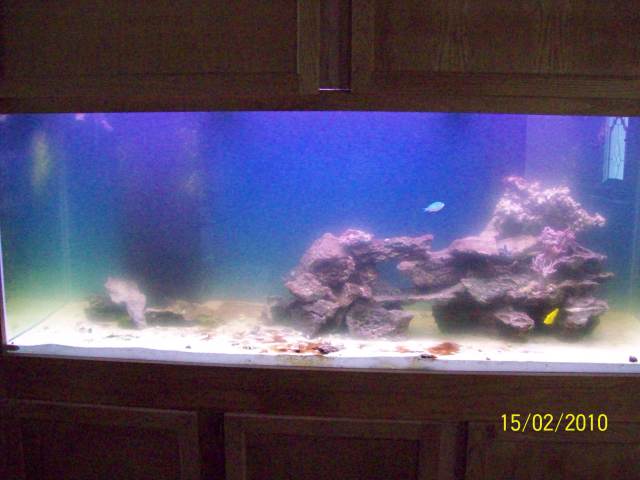 Cloudy reef tank
QuestionTank pic
QUESTION: I set up a new 250 ga
Cloudy reef tank
QuestionTank pic
QUESTION: I set up a new 250 ga
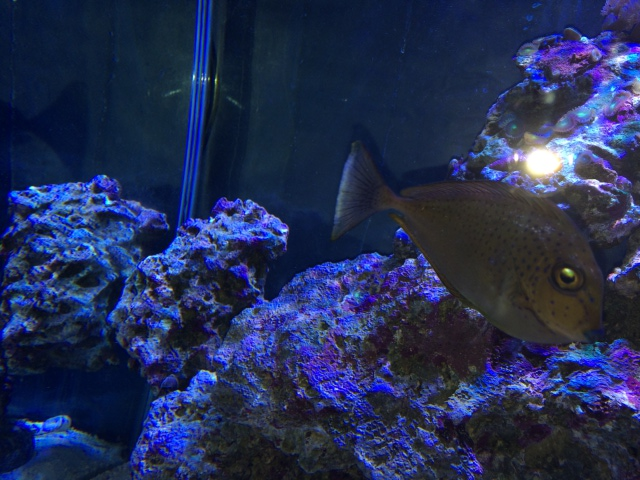 Possible Tang Ich
Question
Unicorn Tang Unicorn Tang
Hi Davi
Possible Tang Ich
Question
Unicorn Tang Unicorn Tang
Hi Davi
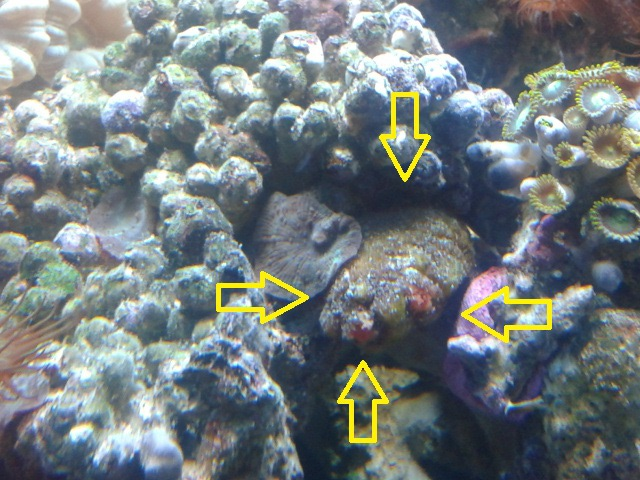 Unknown rock growth maybe?
Question
saltwater alien?
I have a rock with sev
Unknown rock growth maybe?
Question
saltwater alien?
I have a rock with sev
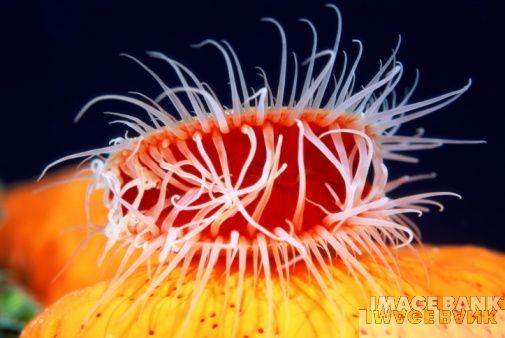 electrc-flame scallop
QuestionHi! I have an electrc flame scallop whos Flames
electrc-flame scallop
QuestionHi! I have an electrc flame scallop whos Flames
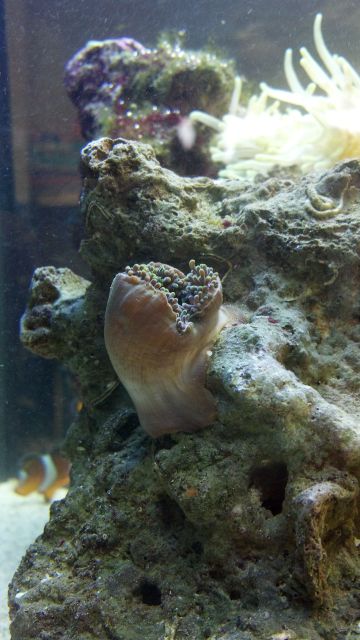 anenome Problems
Question
anemone
I have had my tank for quite so
anenome Problems
Question
anemone
I have had my tank for quite so